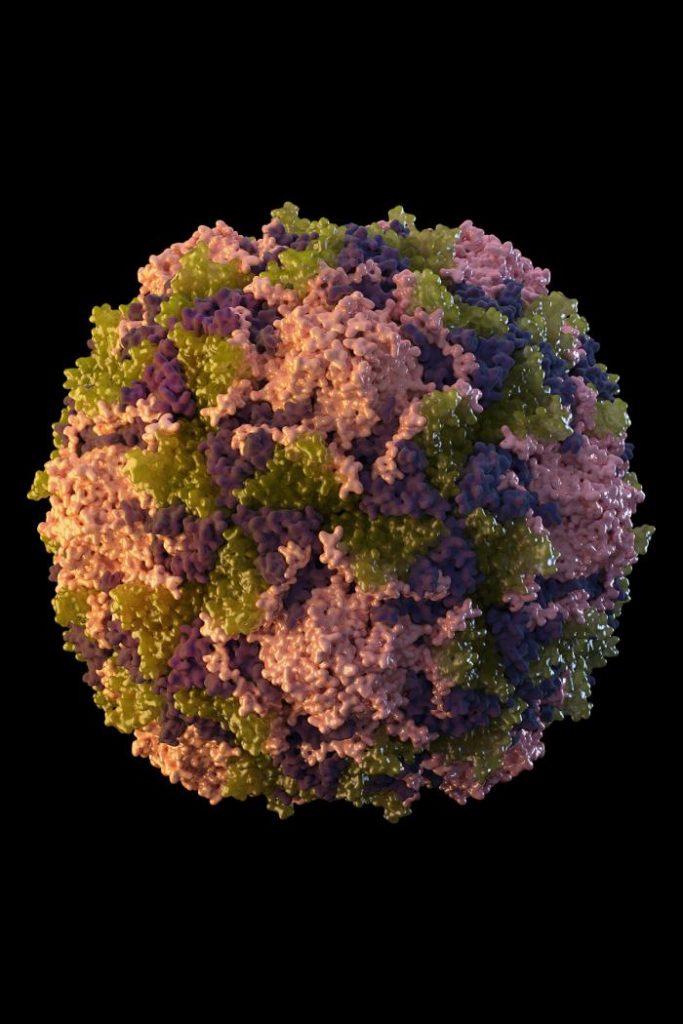Additional cases of type 2 circulating vaccine-derived poliovirus (cVDPV2) have been reported recently in both Syria and the Democratic Republic of the Congo (DRC), according to the Global Polio Eradication Initiative (GPEI) this week.
Syria

Three new cases of circulating vaccine-derived poliovirus type 2 (cVDPV2) were officially confirmed at WHO headquarters in the past week, bringing the total number of cases in this outbreak to 30. Onset of paralysis of these cases is between 3 March and 16 June. Twenty-nine of the cases are from Mayadeen district, Deir Ez-Zour governorate, and one case is from Talabyad district, Raqqa governorate.
Two vaccination campaigns are planned for both Deir Ez-Zour and Raqqa governorates.
The first mOPV2 round in Deir Ez-Zour was successfully carried out between 22-26 July. Independent post-campaign monitoring reflected coverage of 88.4% (based on caregiver recall). The second round is planned for 19-23 August, and will include mOPV2 and IPV.
Raqqa Governorate plans to start mOPV2 campaigns on 12 August.
Democratic Republic of the Congo
Three new cases of type 2 circulating vaccine-derived poliovirus (cVDPV2) were reported in the past week in the Democratic Republic of the Congo (DR Congo). This brings the total number of cases this year to seven, in two separate outbreaks of cVDPV2: in Haut Lomami province (five cases, with onset of paralysis of the most recent case on 13 June); and in Maniema province (two cases with onset of paralysis on 26 March and 18 April, with an additional isolate detected in a healthy individual with sample collection on 2 May).
Outbreak response is taking place, including use of monovalent oral polio vaccine type 2 (mOPV2) in line with internationally-agreed outbreak response protocols, targeting more than 750,000 children under the age of five across the two provinces.
The first mOPV2 round was implemented on 27-29 June in the two affected provinces; and the second mOPV2 round ran from 13-15 July in Haut Lomami and 20-22 July in Maniema.
Help support the growth of the website, podcast and a future internet program about infectious disease on Patreon–As little as $1 a month. Thanks https://www.patreon.com/outbreak
What are Vaccine-derived polioviruses (VDPVs)?
The GPEI defines Vaccine-derived polioviruses (VDPVs) as follows: The oral polio vaccine (OPV) contains a live, attenuated (weakened) vaccine-virus. When a child is vaccinated, the weakened vaccine-virus replicates in the intestine and enters into the bloodstream, triggering a protective immune response in the child. Like wild poliovirus, the child excretes the vaccine-virus for a period of six to eight weeks. Importantly, as it is excreted, some of the vaccine-virus may no longer be the same as the original vaccine-virus as it has genetically altered during replication. This is called a vaccine-derived poliovirus.
OPV and inactivated polio vaccine (IPV) have important but distinct advantages, and both vaccines are necessary to end polio for good. Because OPV protects both the individual and the community, it has been an essential tool for countries working to stop wild poliovirus transmission.
IPV eliminates the risk of cVDPV, and thus is vital to end polio once and for all.
Related:
- Burkholderia cepacia risk prompts recall of several drugs, dietary supplements
- Illinois, Ohio, and Texas now report Salmonella infections linked to papayas
- Ohio sees more H3N2v cases linked to pig exposure
- Guatemala: Typhoid outbreak in Petén department
- Malaria disease severity: UBC researchers develop quick method
- Measles: 2nd case reported at Perth Waldorf School
- Philippines: 1st avian influenza outbreak reported in Pampanga




I think those countries who have reported cVDPV2 would stop trivalent OPV due the type 2 that is causing this outbreak and should continue with IPV together with bivalent OPV. otherwise those countries who are almost certify polio free will import form those countries more especially the neighboring countries. and therefore we will not eradicate polio virus. this work is for all.